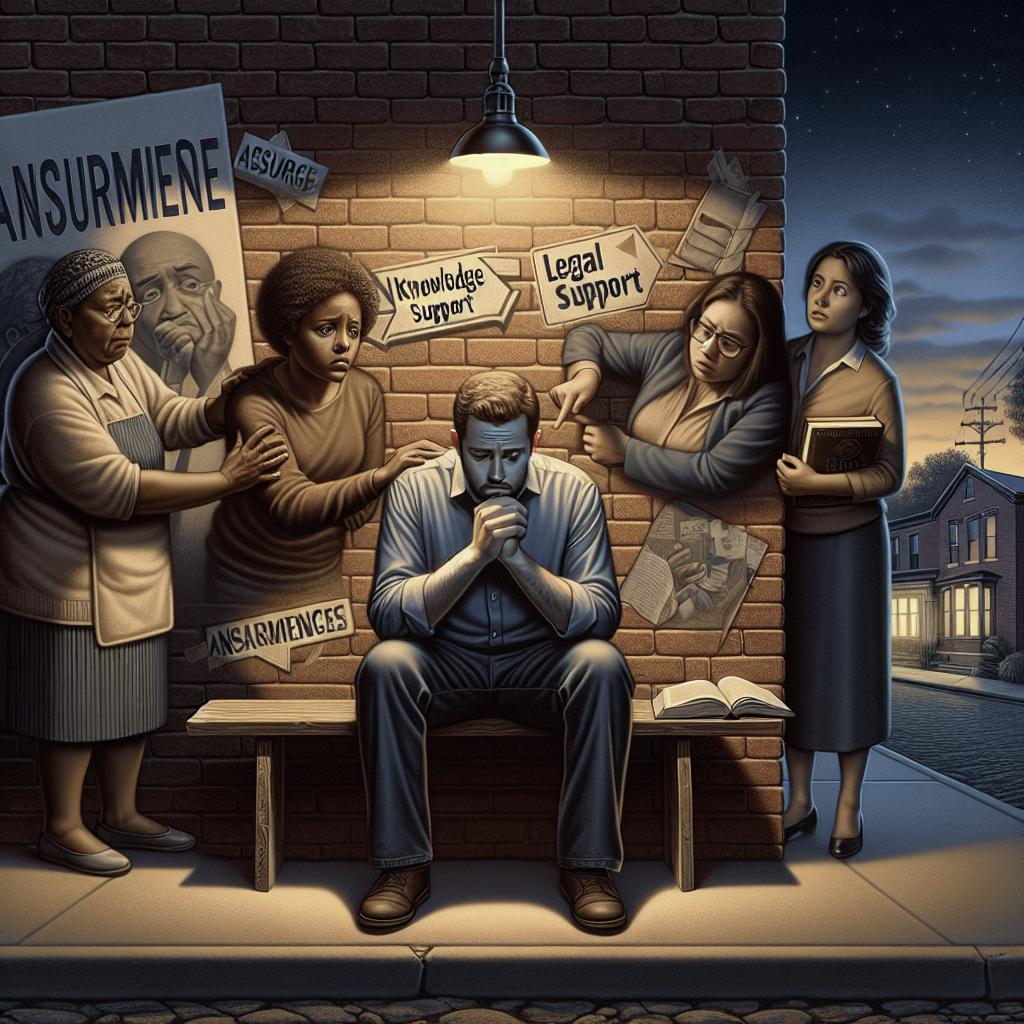“`html
Strengthening Communities: Supporting Individuals Affected by Crime
Communities play a crucial role in supporting individuals affected by crime. This commitment can take many forms, including fostering personal development, implementing youth crime prevention programs, establishing community centers, and addressing the link between substance abuse and criminal activities. By actively participating in these areas, communities can provide a nurturing environment that aids recovery, prevents further offenses, and promotes overall well-being. In this blog post, we’ll explore different strategies that communities can employ to help individuals affected by crime, delve into the effectiveness of these approaches, and highlight how collaboration can enhance safety and harmony for everyone involved.
Step 1: Self Development
Self-development is a foundational step for individuals affected by crime. It involves equipping them with the skills and mindset needed to overcome past challenges and build a positive future. Communities can facilitate self-development through workshops, mentorship programs, and training sessions that focus on personal growth, emotional intelligence, and resilience. Such programs not only empower individuals but also help them regain confidence and motivation to contribute positively to society.
Furthermore, access to education and vocational training can significantly impact rehabilitation and integration into the community. By offering courses that range from basic literacy and numeracy to specialized skills training, communities can open up new opportunities for individuals affected by crime. Encouraging continuous learning unlocks potential and fosters a sense of accomplishment, providing a pathway to self-sufficiency and purpose.
The community’s role in creating a supportive environment for self-development is crucial. Through collective efforts, such as collaborations with local businesses and educational institutions, new avenues can be explored to provide resources, internship opportunities, and job placements for these individuals. This approach strengthens community ties and creates a network of support that fosters inclusivity and empowerment.
Crime Prevention Programs for Youth
Youth crime prevention programs are essential for cultivating a safer community environment. Adolescents are at a critical stage of development, and targeted interventions can help steer them away from criminal activities. Communities should invest in after-school programs, sports, arts, and other engaging activities that keep young people occupied and provide alternative pathways toward achievement and fulfillment.
Programs focusing on leadership, conflict resolution, and peer mentorship can help youths develop essential life skills. Encouraging open dialogue about the consequences of crime and reinforcing positive behavior establishes a deterrent effect. By involving local law enforcement, educators, and community leaders, these programs can bridge gaps, build trust, and create a cohesive effort to safeguard the potential of young individuals.
Long-term success in crime prevention for youth relies on the adaptability and responsiveness of these programs. Utilizing feedback from participants, community members, and experts helps evolve such initiatives to meet emerging challenges and cater to the unique needs of the area’s youth. This dynamic approach fosters a sense of ownership and belonging, crucial for maintaining the program’s momentum and impact.
Do Community Centers Reduce Crime?
Community centers often serve as havens for individuals seeking support, resources, and social interaction. By providing a secure and inclusive environment, community centers can effectively reduce crime rates. These centers offer various programs and services, such as counseling, recreational activities, educational workshops, and employment assistance, which contribute to individual empowerment and community cohesion.
Through community centers, individuals affected by crime can access critical support networks and pathways for personal recovery. The centers act as hubs, bringing together local organizations, volunteers, and service providers to connect those in need with necessary resources. A proactive approach to addressing people’s unique challenges fosters resilience and can deter involvement in criminal activities.
The impact of community centers extends beyond individual support; they can also promote collective responsibility and pride. By encouraging community-driven initiatives and volunteerism, centers foster a culture of care and accountability. This can lead to stronger neighborhood ties, reduced stigmas, and an overall safer environment that encourages residents to look out for one another.
Substance Abuse and Crime
The intersection between substance abuse and crime is a significant concern for communities. Substance abuse often leads to criminal behavior, whether through possession, distribution, or offenses committed to fund an addiction. Addressing this issue requires understanding and tackling the root causes of addiction. Communities can support these efforts by promoting awareness, providing access to rehabilitation services, and creating supportive networks for recovery.
Initiatives that involve collaboration with healthcare professionals, social workers, and law enforcement can develop comprehensive prevention and treatment programs. Educating individuals about the danger of substance abuse and providing alternative coping mechanisms can reduce dependency and associated criminal activities. Offering support groups, therapy sessions, and preventative education at the community level is essential to these strategies.
Reducing the stigma associated with substance abuse is crucial for effective intervention. By promoting understanding and empathy, communities can encourage individuals to seek help without fear of judgment or discrimination. Establishing an open and supportive network not only aids recovery but also fosters communal resilience in the face of challenges associated with substance abuse and crime.
Future Prospects
| Approach | Description | Impact |
|---|---|---|
| Self Development | Focused on personal growth, education, and skills training to empower individuals. | Equips individuals for integration and positivity in society. |
| Crime Prevention Programs for Youth | Targeted interventions for youth to redirect them from criminal pathways. | Reduces future crime rate, promotes positive youth engagement. |
| Community Centers | Centers providing resources and support, fostering community cohesiveness. | Enhances individual support, reduces crime rates, promotes community pride. |
| Substance Abuse and Crime | Addressing addiction through awareness and rehabilitation services. | Reduces criminal behavior linked to addiction, supports recovery efforts. |
“` This HTML blog post weaves in community support strategies for individuals affected by crime, addressing crucial areas such as personal development, youth crime prevention, the role of community centers, and the link between substance abuse and crime. Each section outlines practical approaches communities can take, with a holistic perspective on fostering safety and resilience.


